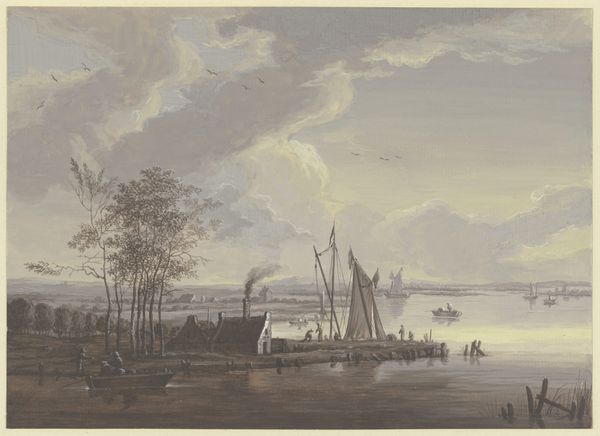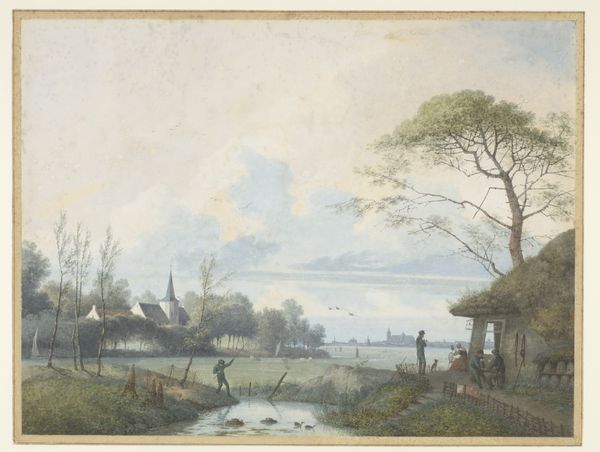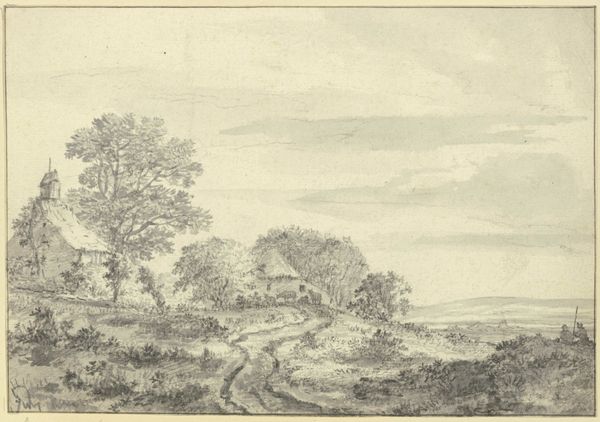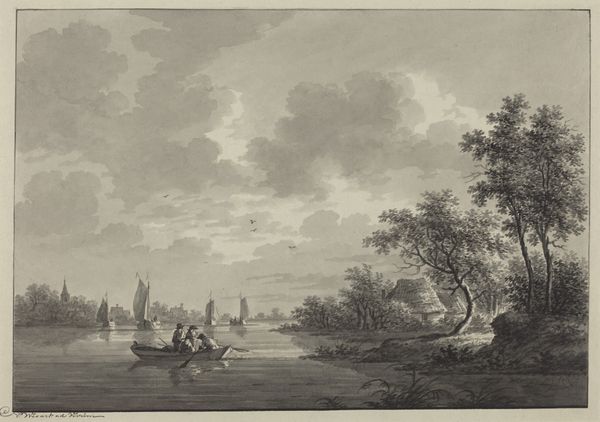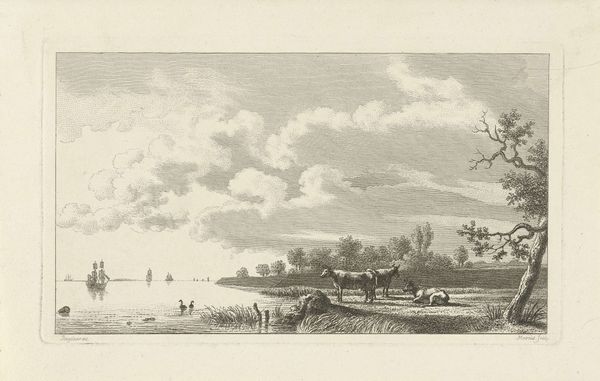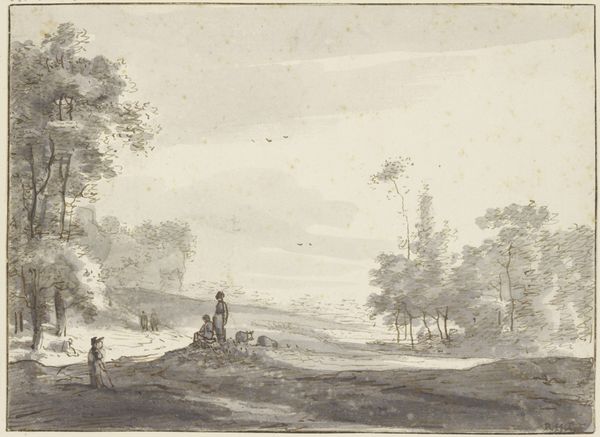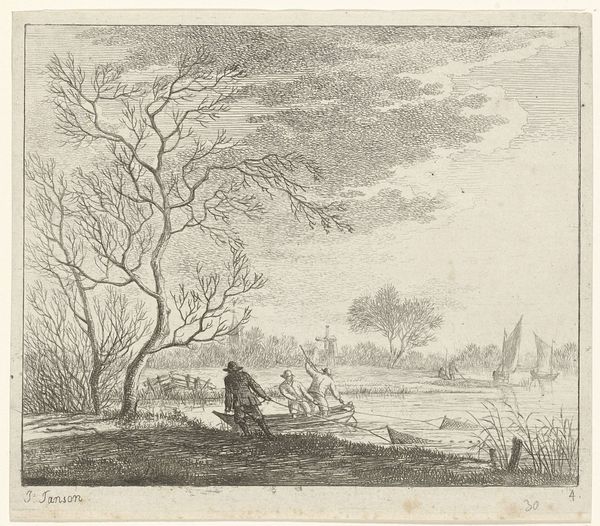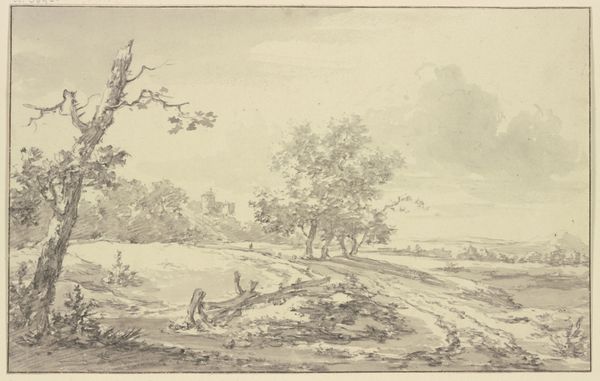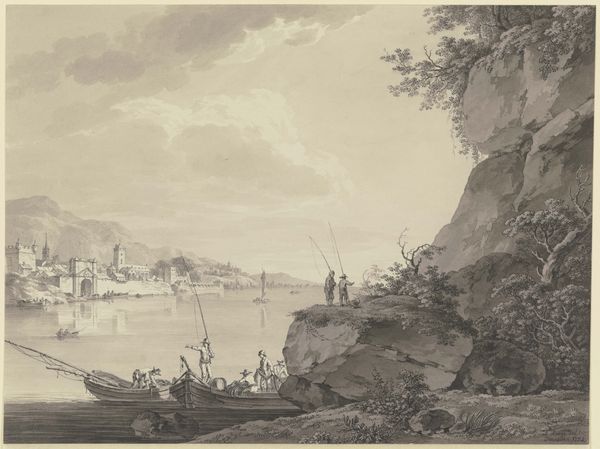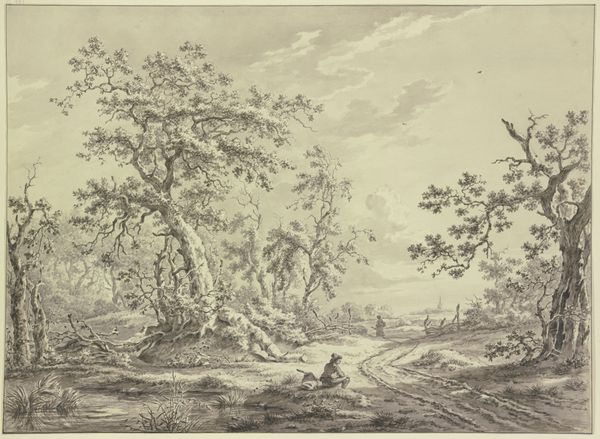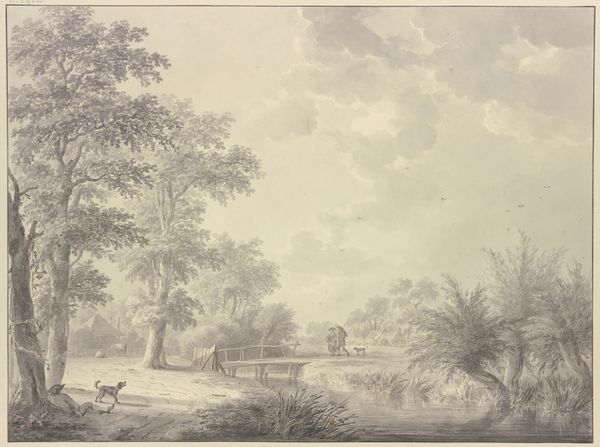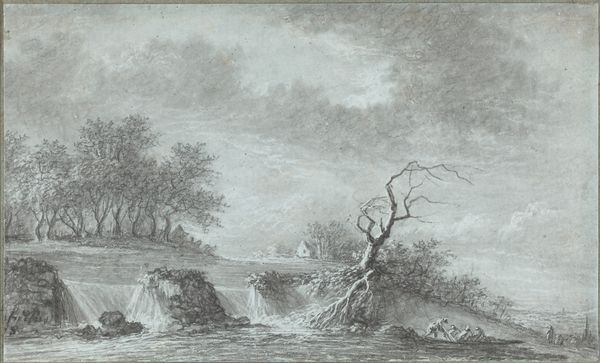
drawing, paper, watercolor, pencil
#
drawing
#
16_19th-century
#
landscape
#
paper
#
watercolor
#
romanticism
#
pencil
#
watercolour illustration
#
pencil art
#
watercolor
Copyright: Public Domain
Curator: Let’s consider Johann Friedrich Morgenstern's "River scenery in the winter," a 19th-century drawing currently residing here at the Städel Museum. What strikes you initially? Editor: The immediate sense is one of stark desolation. A muted palette, predominantly grey and brown, emphasizes the harshness of winter, but there is warmth to be seen as well, coming from the village in the distance, that seems comforting in a way. Curator: Indeed. The limited tonal range works masterfully. Notice how Morgenstern utilizes pencil and watercolor to define spatial relationships. The varying washes create depth, especially evident in the receding shoreline and sky. Editor: Beyond the formal qualities, the scene feels steeped in allegory. The barren tree is particularly evocative; it's a classic symbol of mortality and the transient nature of life, particularly poignant when juxtaposed with figures actively working and ice skating nearby. Is it life goes on, despite everything? Curator: A valid point. I am intrigued by your psychological reading, specifically in light of archetypal symbolism, especially within a Romantic landscape, but consider that Romanticism uses the landscape to express not just nature, but form. The artist seems to be using landscape conventions of asymmetry, of leading the eye across the page to an ultimate focal point. Editor: Precisely. Consider, then, the placement of figures. They’re dwarfed by the immensity of the landscape, aren't they? Reinforcing this idea of human insignificance but I can't help but see them as guardians and residents to the harsh landscape surrounding. It feels more protective and nurturing than nihilistic to me. Curator: An interesting take. Looking at the formal arrangement, the work clearly directs our eye along lines from figures to house to boats, linking these various compositional elements and themes together to achieve what one might argue is more to be sought out from the piece. Editor: So, we each arrive at divergent, valid, meanings: the work either expresses the stark power of landscape through Romantic conventions, or, alternatively, by utilizing symbolism and cultural association it expresses and provides us with a complex cultural reflection of our very own. Curator: Yes, and perhaps it is in this dialectic of symbolic association versus formal qualities where its most poignant potential ultimately lies.
Comments
No comments
Be the first to comment and join the conversation on the ultimate creative platform.
